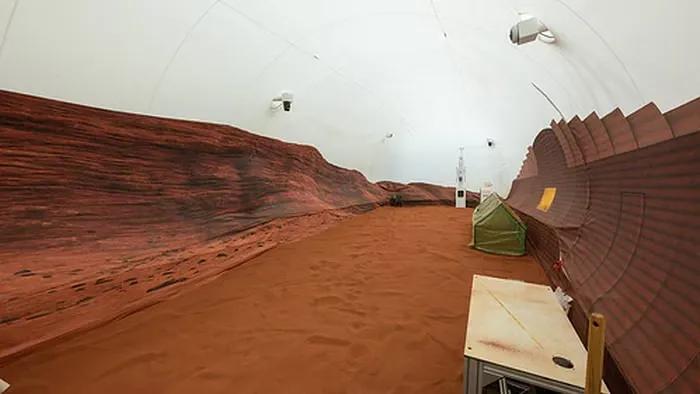Washington: NASA has sealed four participants to embark on the agency’s first one-year analogue mission in a habitat to simulate living on Mars.
CHAPEA, or Crew Health and Performance Exploration Analog, is a ground-based mission at the agency’s Johnson Space Center in Houston.
The mission is the first of three planned one-year Mars surface simulations, during which crew members will live and work in a 3D-printed, 1,700-square-foot habitat called Mars Dune Alpha for an year.
The four-member crew include biologist Kelly Haston, Ross Brockwell, who is a structural engineer, Nathan Jones, a physician, and Anca Selariu, a Navy microbiologist.
During the simulation, crew members will carry out different types of mission activities, including simulated spacewalks, robotic operations, habitat maintenance, personal hygiene, exercise, and crop growth. To be as Mars-realistic as feasible, the crew also will face environmental stressors such as resource limitations, isolation, and equipment failure.
“The simulation will allow us to collect cognitive and physical performance data to give us more insight into the potential impacts of long-duration missions to Mars on crew health and performance,” said Grace Douglas, CHAPEA principal investigator, in a statement.
“Ultimately, this information will help NASA make informed decisions to design and plan for a successful human mission to Mars,” Douglas added.
The mission also includes two alternates to the crew: Alyssa Shannon, former primary crew member and an advanced practice nurse; and Trevor Clark, former back-up crew member aerospace engineer.
The in-person media event includes an opportunity to speak with subject matter experts and capture b-roll and photos inside the habitat. Crew members will not be available as they’ll arrive at NASA Johnson later this spring to begin training for the simulated mission. CHAPEA’s missions 2 and 3 will be conducted in 2025 and 2026, respectively.
NASA is leading a return to the Moon for long-term exploration. Through the Artemis missions, NASA will land the first woman and first person of colour on the Moon, using innovative technologies to explore more of the lunar surface than ever before.
Lessons learned on and around the Moon and activities like CHAPEA on the ground will prepare NASA for the next giant leap: sending astronauts to Mars. —IANS
NASA Seals 4 Volunteers On Isolated Mars-Like Habitat For A Year
 T
TJul 04, 2023, 02:48 PM
